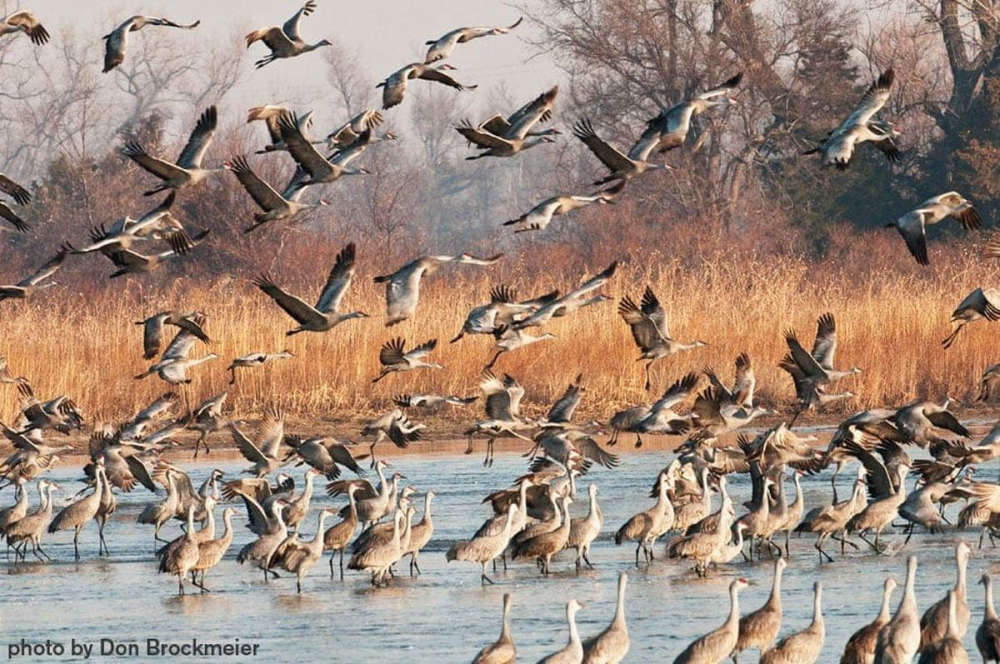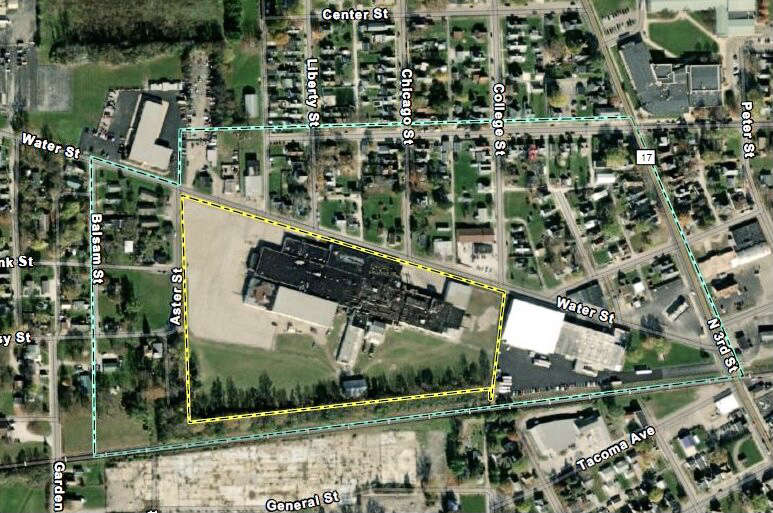
Thousands of Sandhill Cranes visit the area's shallow marshes.
Sandhill cranes can be seen at Jasper-Pulaski Fish & Wildlife Area through December.
Thousands of Sandhill Cranes visit the area's shallow marshes from mid-October through mid-December each fall. Crane numbers peak in late November or early December.
DNR staff at Jasper-Pulaski Fish & Wildlife Area make weekly crane counts during peak fall migration.
Four to six property staff members perform the counts before sunrise. They are stationed in parked vehicles in separate areas of the property. Each person counts small groups of cranes as they leave the roost for the day, fly overhead in their assigned directions, and jot down their counts on paper. Toward the end of each count, one of the property managers checks the waterfowl resting area where the cranes were roosting, lets the other staff know when most cranes are out for the day, and estimates the remaining number of cranes, if any, remain. When each staff member returns to the office with their paper, the property manager tallies each set of numbers for the final weekly count.
Best time to view
· Sunrise: Gigantic flocks rise and fly from their roosting marshes to feed in surrounding private agricultural fields. On their way to feed, some birds stop in the open grassland areas of the refuge.
· Sunset: Beginning about one hour before sunset, flocks of cranes kite into the refuge near the observation area from all directions. They gab and socialize again before returning to roosting marshes at dusk.
While this is the cranes’ usual routine, it is important to remember they are wild animals and are not always predictable.
Best location to view
The crane spectacle is best seen from the observation platform at the Sandhill Crane Observation Area. During the day, cranes can be spotted feeding and dancing in nearby harvested farm fields. Roosting marshes in the Waterfowl Resting Area are closed to the public so that migrating birds can rest without human disturbance.
Viewing tips
While cranes may gather close to the observation platform, they are usually several hundred yards away. A few stationary viewing scopes are available, but it is recommended that you bring your own spotting scope or binoculars. If you photograph cranes, your most powerful zoom lens will be handy, as getting too close to these birds will easily spook them.


 78-year-old man killed in Cass County accident
78-year-old man killed in Cass County accident
 Logansport house fire damages two homes and injures two firefighters Christmas Day
Logansport house fire damages two homes and injures two firefighters Christmas Day
 Santa Scott of Kewanna brings holiday cheer through seasonal "Santa business"
Santa Scott of Kewanna brings holiday cheer through seasonal "Santa business"
 Extensive cleanup of lead-contaminated soil in 84 residential yards in Logansport near the former Exide Battery Corp. completed
Extensive cleanup of lead-contaminated soil in 84 residential yards in Logansport near the former Exide Battery Corp. completed
 Ray Allison named next executive director of the Indiana State Fair Commission
Ray Allison named next executive director of the Indiana State Fair Commission
 Plymouth Police ask public's help to find missing man
Plymouth Police ask public's help to find missing man
 INvestABLE Indiana announces expanded eligibility criteria beginning January 1
INvestABLE Indiana announces expanded eligibility criteria beginning January 1
 Governor Braun announces record year for Indiana tourism
Governor Braun announces record year for Indiana tourism




